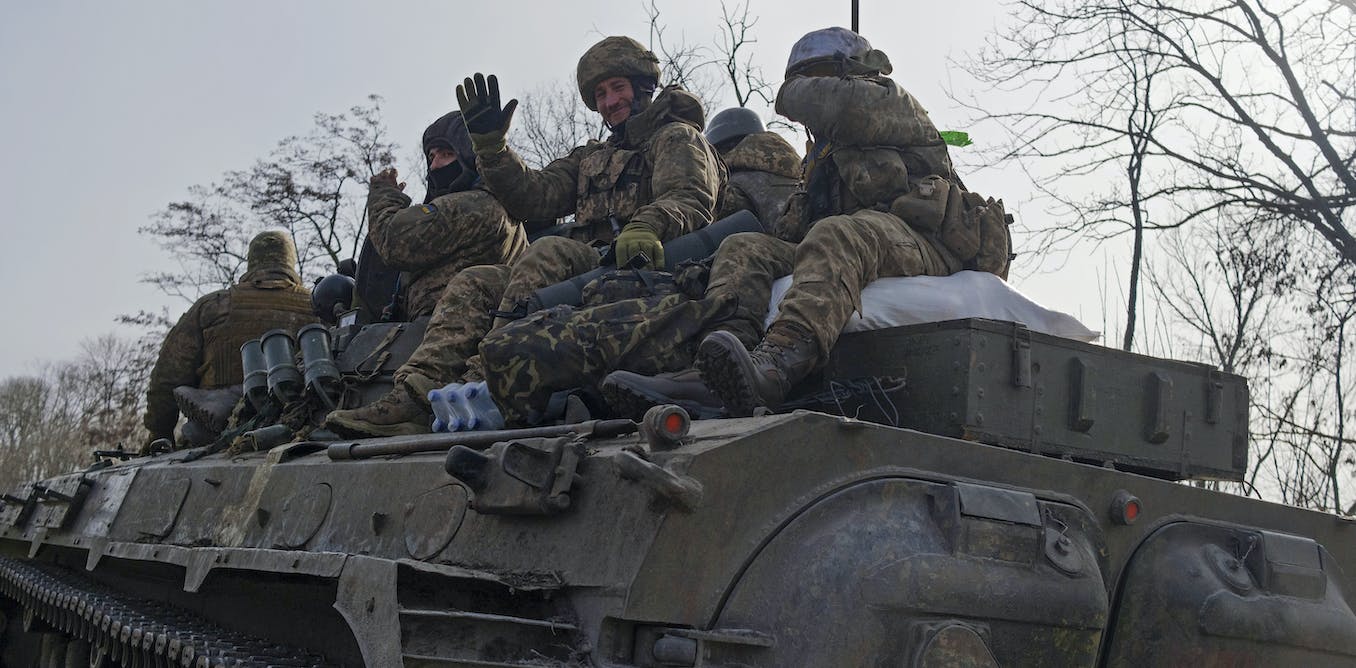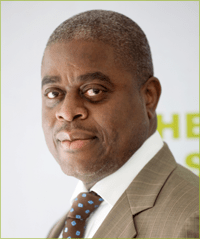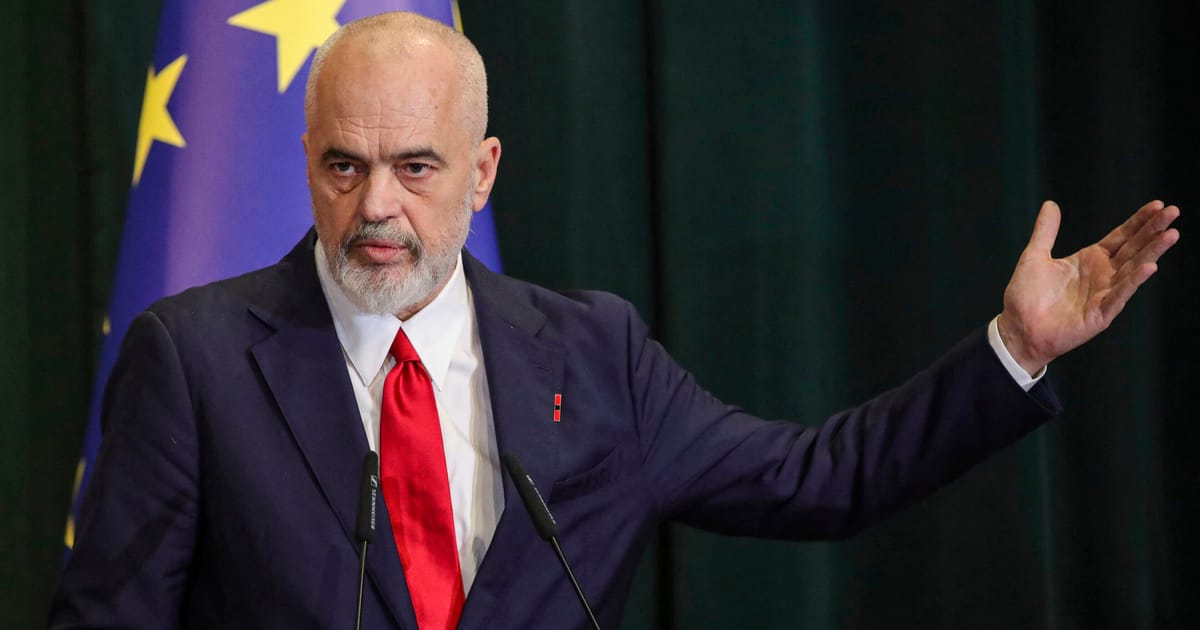Reading the international press on the first day of spring in Ukraine, it appears that Russia has jumped the gun somewhat in its “spring offensive”.
It has poured troops and armour into an area around the town of Vuhledar in southern Ukraine in what Ukrainian officials have referred to as the “largest tank battle of the war to date”. The New York Times has an in-depth piece about the battle in which it said newly deployed Russian tank reserves have been “decimated” by Ukrainian ambushes.
Part of the problem faced by the invading forces has been a change in the weather in recent weeks and the appearance of what is known as the “rasputitsa”, or spring thaw. At this time, Russian armour tends to become hopelessly bogged, making for easy targets for precision Ukrainian artillery.
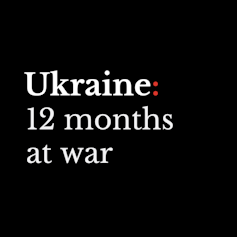
Since Vladimir Putin sent his war machine into Ukraine on February 24 2022, The Conversation has called upon some of the leading experts in international security, geopolitics and military tactics to help our readers understand the big issues. You can also subscribe to our fortnightly recap of expert analysis of the conflict in Ukraine.
It’s a similar situation in the eastern Donbas region where bloody and attritional fighting has continued for months now around the town of Bakhmut with heavy casualties on both sides.
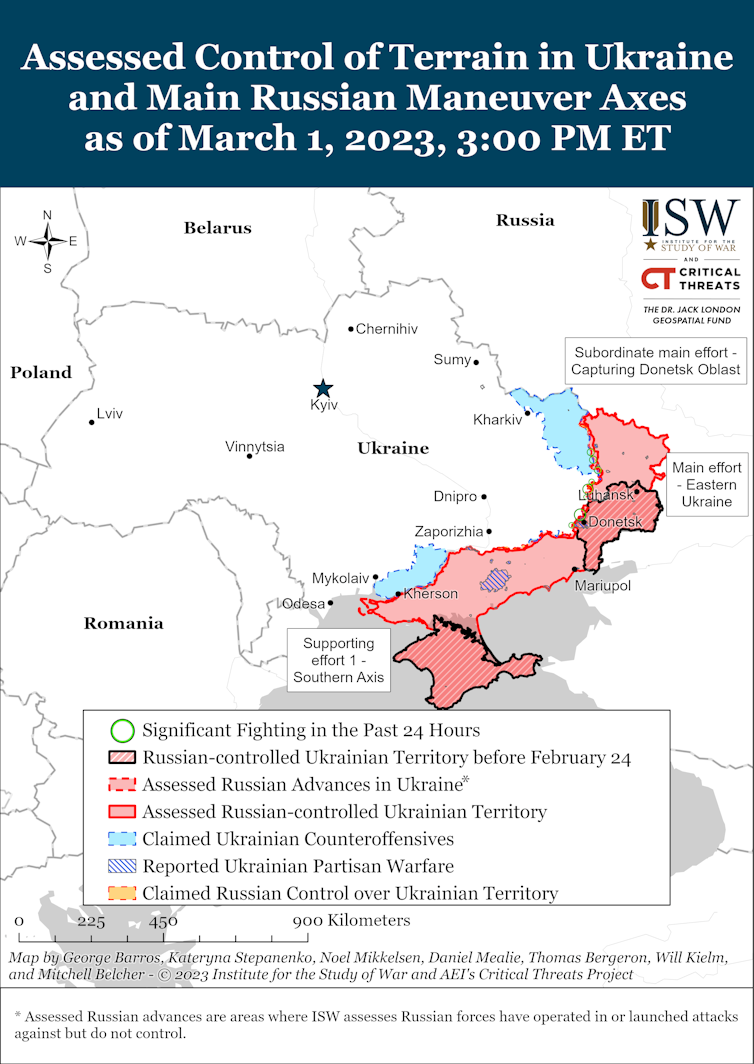
Institute for the Study of War
The human cost aside, the conflict is also taking a heavy toll on military hardware and both sides, for example, are reported to be struggling to replace equipment used or captured. That is putting a great deal of pressure on supply chains, writes Matthew Powell, an expert in military strategy at the University of Portsmouth.
Resupplying – and the logistical difficulties involved – was ever a problem for military commanders. But with the enormously complex and sophisticated weaponry being used in Ukraine, the cost and lead-in time for deployment are a lot longer than they used to be, says Powell.
He adds that the sheer cost of some aircraft and the difficulty of replacing them if lost could mean that military commanders and their political masters may become chary about using them. It’s worth remembering that Nato countries will need to replace the tanks (and perhaps, in weeks to come) aircraft it is supplying to Ukraine to ensure their own future security.
Ukraine war: high cost of replacing military hardware will change the nature of the conflict
Ominously for those military commanders and their political masters, many experts believe this war is not even halfway done yet. Liam Collins, the founding director at the Modern War Institute of the United States Military Academy at West Point, believes that the conflict will “drag on until the economic and political cost of the war become too great for Russia”.
He says: “Russia is nowhere close to that point, and the war will likely go on for years before Russia reaches a point of an end game.” Collins, a career special forces officer in the US military with 27 years service, has provided six insights about the first year of the conflict.
The looming stalemate in Ukraine one year after the Russian invasion
Away from the battlefield
Beijing marked the first anniversary of the invasion by proposing a peace deal, which seems to reveal more about how China sees itself in the geopolitical pecking order than a coherent roadmap to an end to the conflict.
Stefan Wolff, an expert in international security at the University of Birmingham, has perused China’s “Position on the Political Settlement of the Ukraine Crisis”, which is focused on achieving a ceasefire and eventually resuming peace talks with the aim of negotiating a political settlement.
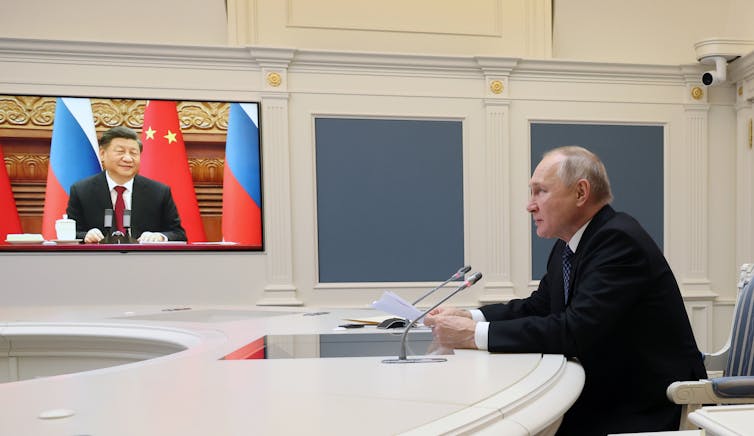
EPA-EFE/Mikhael Klimentiyev/Sputnik/Kremlin pool
While the proposal restates Bejing’s oft-repeated position on the sacrosanct nature of sovereignty and territorial integrity, the plan stops short of calling on Moscow to withdraw from Ukrainian territory – a red line for Kyiv.
While China insists it supports Ukraine’s territorial integrity, it abstained from the United Nations vote demanding “that the Russian Federation immediately, completely and unconditionally withdraw all of its military forces from the territory of Ukraine within its internationally recognised borders”. You can draw your own conclusions from that.
Ukraine: Beijing’s peace initiative offers glimpse at how China plans to win the war
Ukraine’s friends in the west, meanwhile, continue to discuss ways in which they can further support Ukraine. And one thing that this conflict has revealed is the interesting relationship between the EU and Nato.
One is supposedly a political and economic alliance, the other defensive and military. And ne’er should the twain have met. Except that now, according to Baris Celik, an expert in global governance at the University of Sheffield, the EU’s role is becoming increasingly ambiguous.
Celik reports that Brussels is getting more involved in military matters through its European Peace Facility. This is funnelling billions of dollars to military aid for Ukraine, including a program under which Ukrainian personnel are being trained by the EU Military Assistance Mission (EUMAM).
Ukraine war is blurring the lines between Nato and the EU on defence policy
One member of both the EU and Nato which has found itself uncomfortably close to the war is Lithuania, which joined both blocs in 2004 and has been an outspoken critic of Putin. After the invasion was announced, the government even encouraged Russian speakers to telephone people in Russia to explain what was really happening in Ukraine and to incite opposition to the war.
Emilija Pundziūtė-Gallois, a research fellow at Vytautas Magnus University in Kaunas, Lithuania, walks us through some of the measures being taken by her country to oppose the war. She makes it clear that it is the Putin regime, not Russians, that represents such a danger to Lithuania’s security.
How Lithuania is spearheading EU and NATO efforts facing Russia
So farewell then…
It was reported on Monday that Gleb Pavlovsky, a prominent political commentator and Putin critic had passed away at the age of 71. (This was after a long illness, in case you were inclined, like one of our readers, to assume he’d had a mysterious fall from a high-rise building.)
In five decades close to the centre of Russian politics, Pavlovsky went from being a dissident, to a Putin apparatchik, to a dissident again. He was arguably the person responsible for both Putin’s image-making and his development of a political system that ensured Russia’s president virtually untrammelled power.
Stephen Hall, who researches authoritarian regimes at the University of Bath, tells the story of the man whose insight into the post-Soviet Russian psyche gave us Vladimir Putin: man of action.
Gleb Pavlovsky obituary: the man who turned Vladimir Putin into Russia’s action man
Finally, as the conflict moves into its second year we will be continuing to bring you the best analysis and comment, but the recap will now appear once a fortnight instead of weekly. We hope you continue to find our expert insights useful.
Ukraine Recap is available as a fortnightly email newsletter. Click here to get our recaps directly in your inbox.

